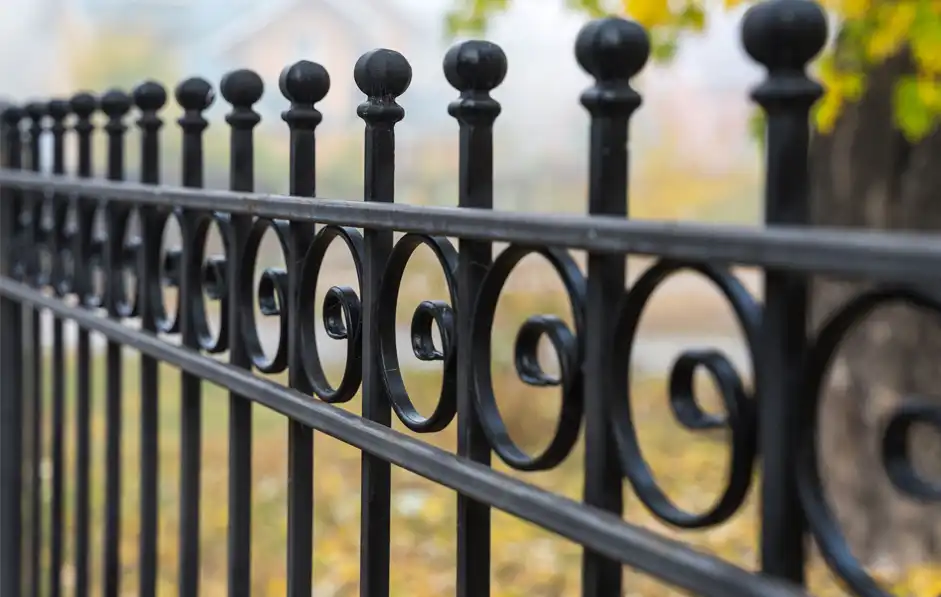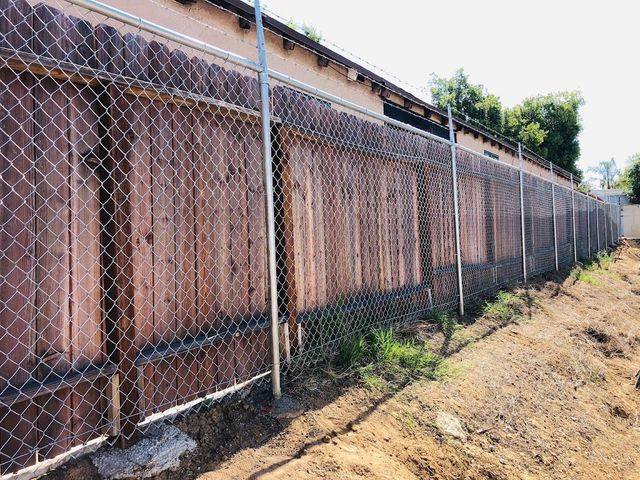All Categories
Featured
An appropriately picked fencing can act as a powerful deterrent versus trespassers and improve the overall safety of your home or service. Choosing the best height includes several aspects, consisting of neighborhood regulations, your details safety and security demands, and the type of fence you are taking into consideration.
![]()
Sometimes, house owners may need a permit to construct a fence over a certain height. To avoid legal problems or fines, always talk to your regional authorities prior to continuing with installment. Furthermore, if you stay in an area governed by a property owners' organization (HOA), be sure to examine their standards, as they may have particular guidelines regarding fencing height and style.
In even more high-risk areas, or if you have important building or are taking care of safety worries, you may wish to take into consideration an even taller fence-- approximately 8 feet or greater. A taller fence is much more daunting to potential trespassers and offers a much better physical barrier. If you want to go also better, take into consideration including security functions like razor cord, electrical secure fencing, or sharp latticework tops, which can make the fence a lot more challenging to violation.
Wood Fencings: Wood fences offer personal privacy, yet they can be relatively very easy to climb. A height of 6 to 8 feet is recommended for ample safety. To enhance prevention, take into consideration including pointed tops or installing a trellis with climbing up plants. Wrought Iron Fences: Wrought iron fences are tough and challenging to climb. They're frequently utilized for higher-security objectives and can be constructed between 6 to 8 feet tall. The vertical bars, specifically when topped with factors or spikes, work as a formidable barrier. Chain-Link Fences: A chain-link fencing that's 6 to 8 feet tall can give a affordable and functional solution. Adding attributes like barbed wire or razor cable at the top can raise safety and security considerably. Plastic Fencings: Plastic fences can additionally supply privacy and security, yet like wooden fences, they might require extra height and includes to stop climbing up. A strong plastic fence of 6 to 8 feet in height can be extremely effective at keeping unwanted site visitors out. 4. Personal privacy vs. Security. If your primary concern is privacy, a taller, strong fencing (like timber or vinyl) may be the very best alternative. Taller fencings block the sight from the outside, making sure that intruders can not conveniently analyze your residential property or area valuables. Privacy fences of 6 to 8 feet are common for this function.
Nonetheless, if safety is even more of an issue than privacy, you could wish to choose a fencing material that offers visibility, such as chain-link, while still being high adequate to prevent climbing up. The benefit of this approach is that it enables you to watch on task outside your property and make it harder for someone to method unnoticed.
![]()
Anti-Climb Functions: Installing anti-climb spikes or trellis expansions on top of your fencing will make it much more hard for burglars to scale it. These can be particularly reliable on wooden or vinyl fences. Razor Cord or Barbed Wire: If protection is a substantial worry, adding razor wire or barbed wire to the top of your fence is a highly effective deterrent. These attributes can be combined with a strong wooden or chain-link fencing for maximum protection. Electric Fencing: For increased security, electric secure fencing can be mounted in addition to an existing fence. While these need unique installation and a specialist to ensure security, they can be extremely efficient in protecting against unauthorized access to your residential or commercial property. 6. Aesthetic Considerations. While protection is the primary goal, it's also essential to consider how the fence will certainly look. Some areas or areas might have visual standards or HOA standards, so selecting a fence that matches your home's style while still giving safety is essential. Choosing a fence that blends right into the environment and fits the architectural design of your home can guarantee that your fencing is both functional and visually attractive.
Final thought. When picking a fencing elevation for optimal safety and security, objective for a balance between elevation, material, and added safety and security features to best satisfy your needs. A height of 6 to 8 feet is usually sufficient for most domestic properties, but if you live in a risky location or have specific security worries, taller fences with added functions like spikes or electrical systems may be needed.
- Understand Local Regulations and Regulations. Before you purchase a brand-new fence, it's vital to know the neighborhood zoning legislations and building regulations that might dictate the optimum height for fence your location. Many municipalities have limitations on the elevation of fencings, particularly for front backyards, where fences are usually limited to 3 to 4 feet. In backyards, nonetheless, you might be allowed to build taller fences, normally varying from 6 to 8 feet.

Sometimes, house owners may need a permit to construct a fence over a certain height. To avoid legal problems or fines, always talk to your regional authorities prior to continuing with installment. Furthermore, if you stay in an area governed by a property owners' organization (HOA), be sure to examine their standards, as they may have particular guidelines regarding fencing height and style.
- Take into consideration the Degree of Security You Required. The elevation of your fence directly associates with the degree of safety and security it provides. A fence that's as well short might be very easy to climb over or bypass, making it inefficient in staying out burglars. For higher protection, objective for a fencing elevation of at the very least 6 feet, which is commonly sufficient to stop most individuals from easily scaling it.
In even more high-risk areas, or if you have important building or are taking care of safety worries, you may wish to take into consideration an even taller fence-- approximately 8 feet or greater. A taller fence is much more daunting to potential trespassers and offers a much better physical barrier. If you want to go also better, take into consideration including security functions like razor cord, electrical secure fencing, or sharp latticework tops, which can make the fence a lot more challenging to violation.
- Pick the Right Fence Product. Different fencing products provide differing degrees of protection, and the elevation of the fencing ought to be matched with the product's toughness. For example:
Wood Fencings: Wood fences offer personal privacy, yet they can be relatively very easy to climb. A height of 6 to 8 feet is recommended for ample safety. To enhance prevention, take into consideration including pointed tops or installing a trellis with climbing up plants. Wrought Iron Fences: Wrought iron fences are tough and challenging to climb. They're frequently utilized for higher-security objectives and can be constructed between 6 to 8 feet tall. The vertical bars, specifically when topped with factors or spikes, work as a formidable barrier. Chain-Link Fences: A chain-link fencing that's 6 to 8 feet tall can give a affordable and functional solution. Adding attributes like barbed wire or razor cable at the top can raise safety and security considerably. Plastic Fencings: Plastic fences can additionally supply privacy and security, yet like wooden fences, they might require extra height and includes to stop climbing up. A strong plastic fence of 6 to 8 feet in height can be extremely effective at keeping unwanted site visitors out. 4. Personal privacy vs. Security. If your primary concern is privacy, a taller, strong fencing (like timber or vinyl) may be the very best alternative. Taller fencings block the sight from the outside, making sure that intruders can not conveniently analyze your residential property or area valuables. Privacy fences of 6 to 8 feet are common for this function.
Nonetheless, if safety is even more of an issue than privacy, you could wish to choose a fencing material that offers visibility, such as chain-link, while still being high adequate to prevent climbing up. The benefit of this approach is that it enables you to watch on task outside your property and make it harder for someone to method unnoticed.
- Enhancing the Safety with Extra Functions. The height of your fence is only one component of your total safety approach. Consider incorporating additional features to boost its performance:

Anti-Climb Functions: Installing anti-climb spikes or trellis expansions on top of your fencing will make it much more hard for burglars to scale it. These can be particularly reliable on wooden or vinyl fences. Razor Cord or Barbed Wire: If protection is a substantial worry, adding razor wire or barbed wire to the top of your fence is a highly effective deterrent. These attributes can be combined with a strong wooden or chain-link fencing for maximum protection. Electric Fencing: For increased security, electric secure fencing can be mounted in addition to an existing fence. While these need unique installation and a specialist to ensure security, they can be extremely efficient in protecting against unauthorized access to your residential or commercial property. 6. Aesthetic Considerations. While protection is the primary goal, it's also essential to consider how the fence will certainly look. Some areas or areas might have visual standards or HOA standards, so selecting a fence that matches your home's style while still giving safety is essential. Choosing a fence that blends right into the environment and fits the architectural design of your home can guarantee that your fencing is both functional and visually attractive.
Final thought. When picking a fencing elevation for optimal safety and security, objective for a balance between elevation, material, and added safety and security features to best satisfy your needs. A height of 6 to 8 feet is usually sufficient for most domestic properties, but if you live in a risky location or have specific security worries, taller fences with added functions like spikes or electrical systems may be needed.
Latest Posts
Explore Montclare Auto Repair’s Premier Car Care Solutions and Why Drivers Choose Them
Published May 28, 25
1 min read
Explore Best Auto Repair Care in Chicago – Drive with Confidence
Published May 25, 25
1 min read
Reputable Industrial Roofing Services by Weathercraft
Published May 24, 25
1 min read
More
Latest Posts
Explore Montclare Auto Repair’s Premier Car Care Solutions and Why Drivers Choose Them
Published May 28, 25
1 min read
Explore Best Auto Repair Care in Chicago – Drive with Confidence
Published May 25, 25
1 min read
Reputable Industrial Roofing Services by Weathercraft
Published May 24, 25
1 min read